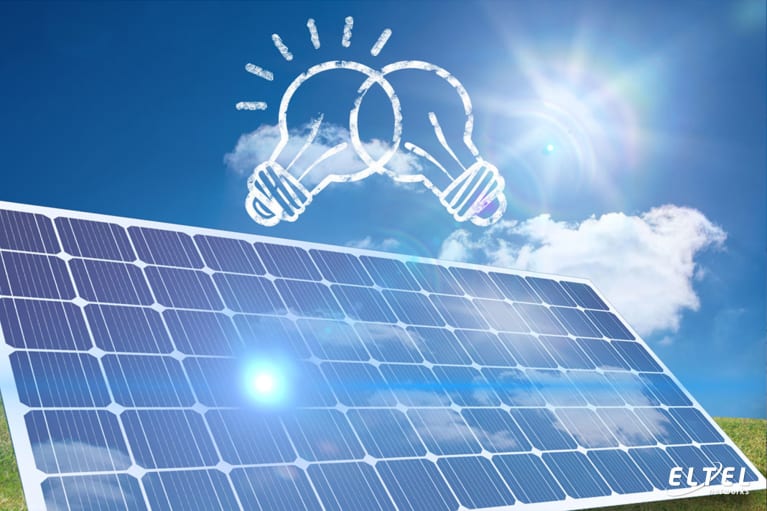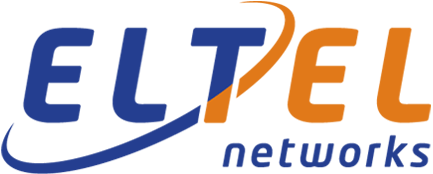
Solar light photo created by creativeart - www.freepik.com
The main area of activities of Eltel Networks, the provider of power, distribution and communication services, in Poland is the electrical power engineering. This area covers a number of issues and may cause difficulties even for those with a technical education, because of the multitude of scientific disciplines it involves. The electrical power issues include, for example, power sources such as generators, conventional and renewable energy source power plants, high-voltage technology, overhead and cable lines, transformer stations for all voltage levels, surge and lightning technologies, and Power Protection System automatics. All of this works within the framework of the provisions of the building law and the energy law as well as standards. To introduce the most important terms we deal with every day, we have prepared an extensive glossary of terms (part 1, 2, 3, 4).
Ampere - the unit of electric current. Its symbol is A.
Electricity supply security - the ability of the power system to ensure the network operation security and to balance the electricity supply and demand.
Electrical fuse – the electrical protection of an electrical system and electrical consumers against the effects of excessive current during a certain period of time by interrupting the current flow. This protection may, but does not need to, protect the system or device from damage, because the main intended use of the fuse is to interrupt the current flow to avoid further effects of excessive current flow, such as an electric shock, explosion or fire. Thus, the fuse first protects against accidents and then, to a some extent, against damage or extension of its range. In common speech, the following terms are used interchangeably: a fuse (that is an electric fuse) or a circuit breaker (in relation to circuit switches or residual current devices).
Blackout - state of a power system failure. The term “blackout” for a power system means a break in the operation of the entire system or a substantial part thereof, resulting in loss of power in the grid in a large area. Each catastrophic blackout system failure has different causes and course, but one can say about a certain general pattern of how this type of failure develops. A number of random events (e.g. network failures, planned or emergency shutdowns of power plant units, extreme weather events) result in exceeding the permitted limits of the basic system operating parameters (frequency and voltage). This then leads to an automatic disconnection of the generation units from the grid and a loss of voltage across the affected area. The characteristic feature of system failures is that they are cascadable. Sometimes the term of “domino effect” is used to characterize this feature. Once the situation has stabilized (the system defence plan is in place), the transmission system operator (TSO) starts to recover the system (the system recovery plan is in place). In many cases, this recovery can take up to a few days.
Read more about blackout in our article Blackout – a phenomenon we will not avoid?
Power unit - a turbine generator that works with a steam boiler. It is an autonomous set of devices which converts the electrical energy. It is part of the power plant.
Approver – an employee designated by the line manager, holding a valid certificate of competence for the operational position and is authorized in writing by the operator of the power equipment and systems to perform the switching operations for the purpose of preparing the workstation.
Distribution of electricity - transport of electricity through distribution networks for the purpose of supplying it to consumers, excluding the sales of electricity.
Electric Power Protection System automatics (PPS) - automatics designed to detect disturbances in the operation of the power system or its components and to take actions to minimize their effects. PPS is divided into corrective, preventive and recovery units.
Solar power plant - a set of devices for the conversion of solar energy, which is classified as a renewable energy source, into usable energy: thermal or electrical.
Power engineering - a science focused on the conversion, transmission, storage and use of different types of energy. Thermal, water, nuclear, wind, solar and electrical power engineering is distinguished.
Read also the article The future of the Polish power engineering - what are its challenges for the power sector?
Reactive energy - energy consumed by electrical equipment which is inductive (e.g. motors, furnaces) or capacitive (e.g. capacitors) in nature. If the amount of reactive energy is too high, there is an increase in transmission losses.
Active energy - active energy refers to a situation when a receiver draws energy from a source and then converts it into work or heat.
Wind farm - a generating unit or a set of these units (windmills) using wind energy for electricity generation and connected to the grid at one connection point.

Wind farms are a continually growing sector of renewable energy sources
Energy efficiency photo created by rawpixel.com - www.freepik.com
Do you want to find out more about the construction of wind farms? Read our article The construction of wind farms - how are such investments carried out
Physical Metering Point (FPP) - a point in the network, device or system where the passing electrical energy is metered.
Grid Connection Point (GCP) - unlike most MSPs, GCP is a maintenance-free facility whose aim is to receive the electrical energy from generation units (mostly wind or photovoltaic farms) and to introduce it into the electric energy distribution system. This is typically a station with 110 kV to medium voltage transformation - depending on the Connection Conditions issued, from 15 to 30 kV, prepared for control, signalling and measurements in the remote station control and supervision system.
Main Supply Point (MSP) - a transformer station that the medium and high voltage overhead lines are connected to. The MSP supplies electricity to the city or large industrial installations. The operators and owners of most MSPs are distribution companies.
Connection groups - groups of entities applying for connection of their equipment, installations and networks to a network, divided according to the following criteria:
- Group I - connected directly to a network with rated voltage in excess of 110 kV
- Group II - connected directly to a network with 110 kV rated voltage
- Group III - connected directly to a network with rated voltage of more than 1 kV, but less than 110 kV
- Group IV - connected directly to a network with rated voltage not higher than 1 kV and connected power higher than 40 kW or rated current of pre-meter protection in current line above 63 A
- Group V - connected directly to a network with rated voltage not higher than 1 kV and connected power not higher than 40 kW or rated current of pre-meter protection in current line not higher than 63 A
- Group VI - connected to the network by a provisional connector which, under terms specified in the connection agreement, will be replaced by a permanent connection, or entities whose equipment, installations and networks are connected to the network for a specified length of time, but not more than one year
Electrical system - a set of electrical power devices designed to supply electricity from the mains to the specific consumers. The home installation starts with the output terminals of the internal power line and at its end there are permanently installed electricity consumers.
Single-phase system - a home system with a voltage of 230 V. It consists of 2 or 3 conductors. The old-style systems consist of two conductors: phase and neutral. The newer ones have also the protective conductor.
Three-phase system - a system that has a voltage of 230/400V and consists of 4 or 5 conductors. Older systems have 3 phase conductors and 1 neutral conductor. In turn, the newer ones have additionally the protective conductor. The three-phase system is primarily used in single-family homes and apartments where there are more powerful energy consumers (heating system, electric cookers).
Renewable energy source (RES) system – a separate set of equipment used for the generation and output of power that is connected at a single point of connection, where electricity is produced from one type of renewable energy source, and also an electrical energy storage facility that stores the electricity produced and is to the relevant set of equipment.
Summary of the terms used in the electrical power engineering, Part 1
This is part one of our glossary including the most important issues relating to the electrical power engineering, i.e. the terms such as: distribution of electricity, power engineering, wind farm, Grid Connection Point. We invite you to read the part two of our glossary.
Author: Piotr Wyrzykowski
